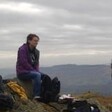Arts and Culture 22 September 2015
Last year, the UN recognized an area of outstanding archaeological and architectural remains, located south of Jerusalem and Bethlehem but lying within the current State of Israel, as a world heritage site.
The documentation lists periods of Hebrew, Persian, Hellenic, Roman, Byzantine, early Islamic and Crusader remains as the key points in thousands of years of human culture to be found there.
The recognition stops then – almost a millennium ago. The site, called Beit Guvrin in the Israeli documents, is better known to Palestinians as the village of Beit Jibrin, whose inhabitants farmed the land, went to the mosque, built schools and clinics, ran a regular rural market and left the marks of their presence – both sacred and everyday – as an integral part of the site.
The people of Beit Jibrin, however, were expelled by Zionist forces in 1948. Many of them and their descendants now live in the refugee camps of al-Azzeh and Fawwar, near Bethlehem. Indeed, al-Azzeh camp is also known locally as Beit Jibrin.
Now De-colonizer, an art and research project, is demanding that UNESCO, the UN’s educational, scientific and cultural organization, acknowledge the full scope of Palestinian history that can be found in Beit Jibrin.
De-Colonizer was founded by Eitan Bronstein, formerly of Zochrot, a group that alerts the Israeli public to abuses of Palestinian rights.
Vibrant village
De-colonizer has written to the Israeli monitoring committee charged with overseeing UNESCO sites, and been told that the matter will be looked into following the current period of Jewish holidays.
In the meantime, the group has also produced a video, Blind Spot at a Heritage Site, which shows — using pre-1948 maps, the current UNESCO plans and historic photographs and documents — that a large part of the vibrant Palestinian village of Beit Jibrin lay within the borders of the current world heritage area.
It also highlights the fact that, for Palestinians, archaeology and heritage are often not a matter of ancient monuments to be visited and photographed.
Until they were driven out by armed forces in 1948, the people of Beit Jibrin lived in and among many of these historic buildings, using some of the cave dwellings and interacting with millennia of history as part of their daily lives.
Even today, former inhabitants of Beit Jibrin and their grandchildren and great-grandchildren visit the site, recalling their connection to what remains of the buildings of the village and to the land their ancestors farmed for generations.
Beit Jibrin is far from being an isolated case of Israeli attempts to obscure and erase the Palestinian presence from the land.
Ayn Hawd, near Haifa, has been transformed into the sanitized “artists’ village” of Ein Hod. Comprising of Palestinian homes ethnically cleansed of their inhabitants and any distinguishing signs of them, it is now a popular Israeli tourist destination.
At Sebastia, near Nablus in the occupied West Bank, leaflets from the Israeli Nature and Parks Authority tell visitors about the Samarian, Hellenic, Roman and Byzantine remains. The same leaflets claim that it is dangerous for visitors to stroll down to the adjacent Palestinian village, which has Crusader and early Islamic sights — and real, live, very welcoming Palestinian people.
In 2011, Merna Alazzeh wrote of making a trip to Beit Jibrin, with her grandmother who had been born there:
We sat under a fig tree, and my grandmother smiled and remembered when she used to play with her friends, decades ago. She said, “It’s the same tree, a little bit different now; it’s been more than 50 years after all. Nonetheless, it is the same tree.”






Comments
De-Colonizer
Permalink Philippa replied on
Congratulations on your excellent detailed work
Thank you Philippa! Do not
Permalink De-Colonizer replied on
Thank you Philippa! Do not hesitate to subscribe to our newsletter to follow our activities!